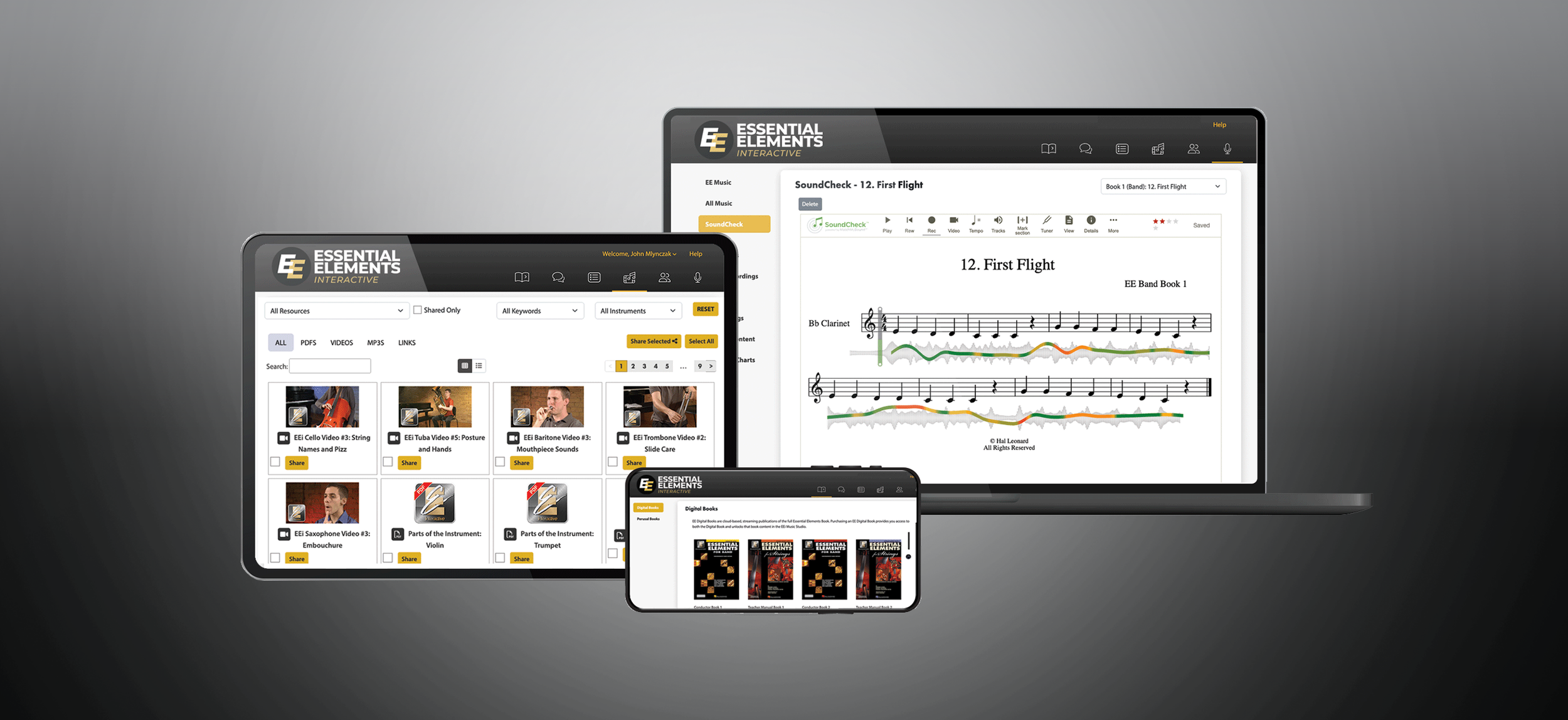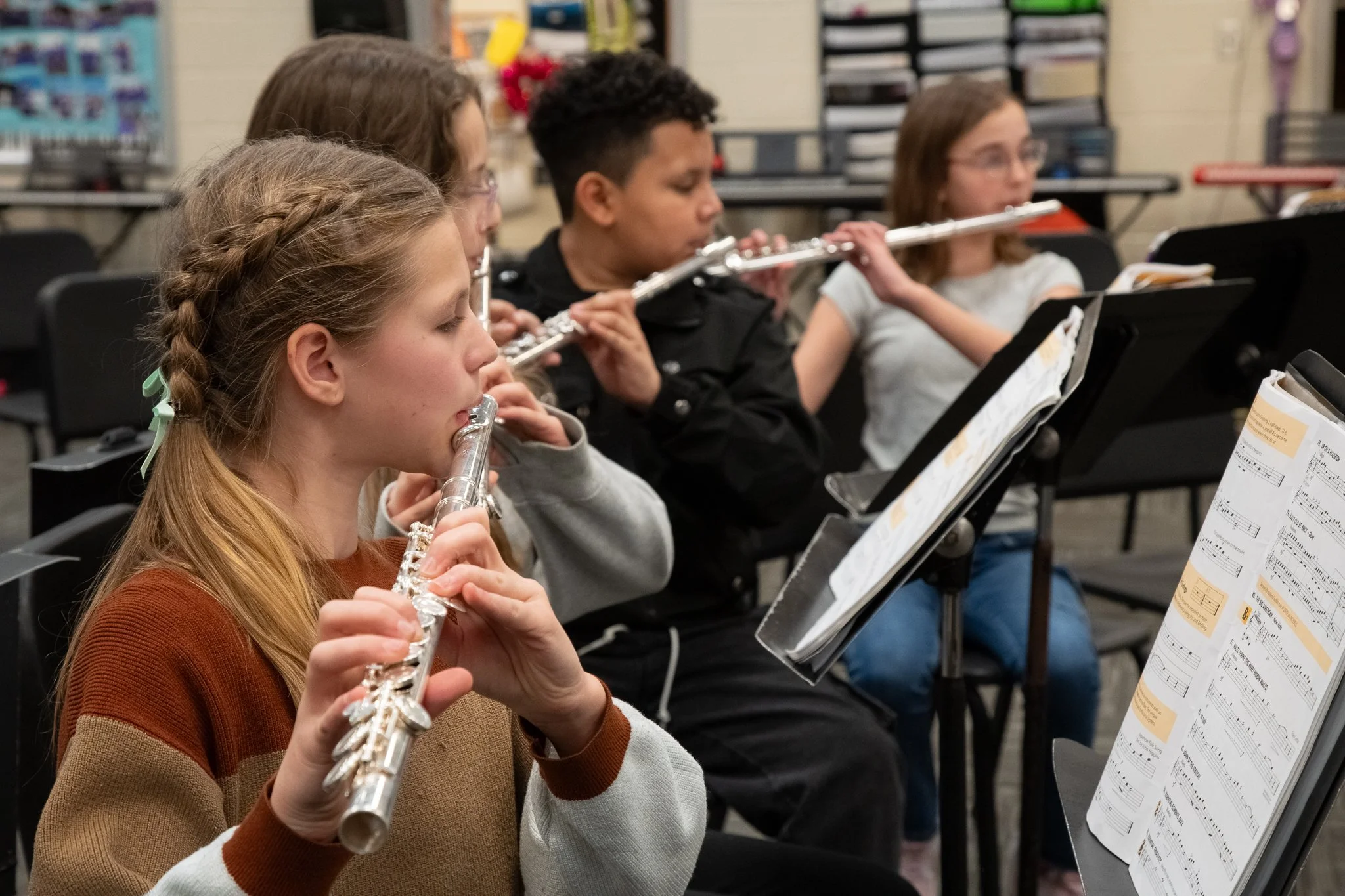A great rehearsal starts long before the first note. Establishing a simple, consistent routine helps students know exactly what to expect and allows you to focus on making music. When students understand the “how” and “why” behind your process, they’ll come to rehearsal more confident, engaged, and ready to learn.
Setting the Tone from the Start
Rehearsal begins the moment students walk through the door. Encourage them to enter quietly and with purpose. It might take time - middle school students often bring the energy of the hallway with them, but consistency is key. Clearly communicate your expectations of behavior and noise level for your room, even if it differs from other classrooms.
Playing a recording of the day’s repertoire as students enter can set the tone for rehearsal. It creates a calm, focused atmosphere and gives them something musical to tune into right away. Once seated, have students “tizzle” (air play) along with the recording - an easy way to engage before rehearsal officially begins.
Post the rehearsal plan prominently on the board, including warm-ups, pieces to be rehearsed, and specific sections to address. Even noting a specific start time can help students take ownership of punctuality. Written reminders such as “Enter quietly” or “Do not unpack yet” reinforce consistency.
And don’t underestimate the power of being present. Greeting students at the door or near instrument storage sets a positive tone and reminds them that you’re invested in their success.
Kicking Off Rehearsal
Have you ever thought of using the typical concert positions: Rest, Ready, Play into your rehearsal routine? A predictable structure helps everyone transition into rehearsal mode. Try teaching three basic positions early on:
Rest: Instrument on lap, back against the chair.
Ready: Sitting tall, feet flat, instrument upright.
Play: Instrument raised, posture unchanged.
When you step onto the podium, students can automatically move to “ready.” This small habit cuts down on talking and wasted time, and it gives everyone a shared cue that rehearsal has begun. Students know it’s time to focus. They stop what they’re doing, get quiet, and move to ready position - sitting tall, eyes forward, and prepared to play.
It may seem like a small detail, but these positions establish a clear expectation. Once the routine is set, I rarely have to ask for their attention - it happens automatically. Once ingrained, they eliminate unnecessary talking or confusion, allowing rehearsals to run smoothly and efficiently. Not to mention, now you have them down for the first concert!
“Consistency builds confidence and expectations become habit.”
Keeping Students Engaged
Consider starting with a few simple breathing exercises. This helps students clear their minds and get focused for the rehearsal. Additionally, breathing together establishes ensemble unity before the first note is played and reinforces the importance of controlled, relaxed air support. This not only centers their focus but also translates directly into better tone and phrasing once they begin to play.
During rehearsal, clear expectations and positive feedback go a long way. Instead of constant reminders, a quick “Thank you for being ready” or “Nice focus, clarinets” can make expectations feel encouraging rather than corrective.
Careful pacing is also critical. Keep all students actively involved to prevent disengagement, particularly for sections like percussion that may have less playing time. Incorporate “tizzling” frequently - students finger and blow air through passages silently, reinforcing rhythm and technique without sound. This strategy allows for precise feedback while maintaining ensemble focus.
Modeling is another essential tool. Demonstrate characteristic tone quality frequently. Students who hear strong modeling develop mature tone faster and with greater accuracy. Encourage individuals or sections to volunteer during warm-ups or technique exercises. This promotes confidence, provides assessment opportunities, and engages the entire ensemble.
Maintaining a clear rehearsal procedure minimizes disruptions and maximizes learning. Reinforce correct behavior through positive feedback. Recognition for focus and discipline motivates students and builds a respectful rehearsal culture.
Wrapping up Rehearsal
End each rehearsal with reflection and direction. Provide brief feedback on what went well, what needs improvement, and what to expect in the next rehearsal. Assign focused practice goals tied to upcoming objectives. Consistent closure helps students understand that every rehearsal is part of a larger learning process.
The Result
Establishing a rehearsal routine takes patience and commitment, but the rewards are immense. Students learn to take responsibility for their actions, stay engaged, and work together as a team. And as the structure becomes habit, your ensemble will grow more disciplined and focused.
Make sure the students understand why there is a rehearsal routine - it isn’t just about rules. When they know the purpose behind each part of the routine, they start to take ownership and pride.
Once students understand these expectations exist to help them, not control them, their mindset changes. They see that the routine is what makes our rehearsals efficient, positive, and musical.
“That’s when true buy-in happens - when students realize the routine is for them and not just from me.”
Want to explore
Essential Elements?
If you’re curious about the new books, use the link below to preview and download Books 1, 2, & 3 for Band and Strings.
About the author:
Erin Cole Steele is the Director of the Division of Education and Senior Educational Clinician for Conn Selmer Inc. Erin also serves as a Clinical Assistant Professor at Arizona State University’s School of Music.




